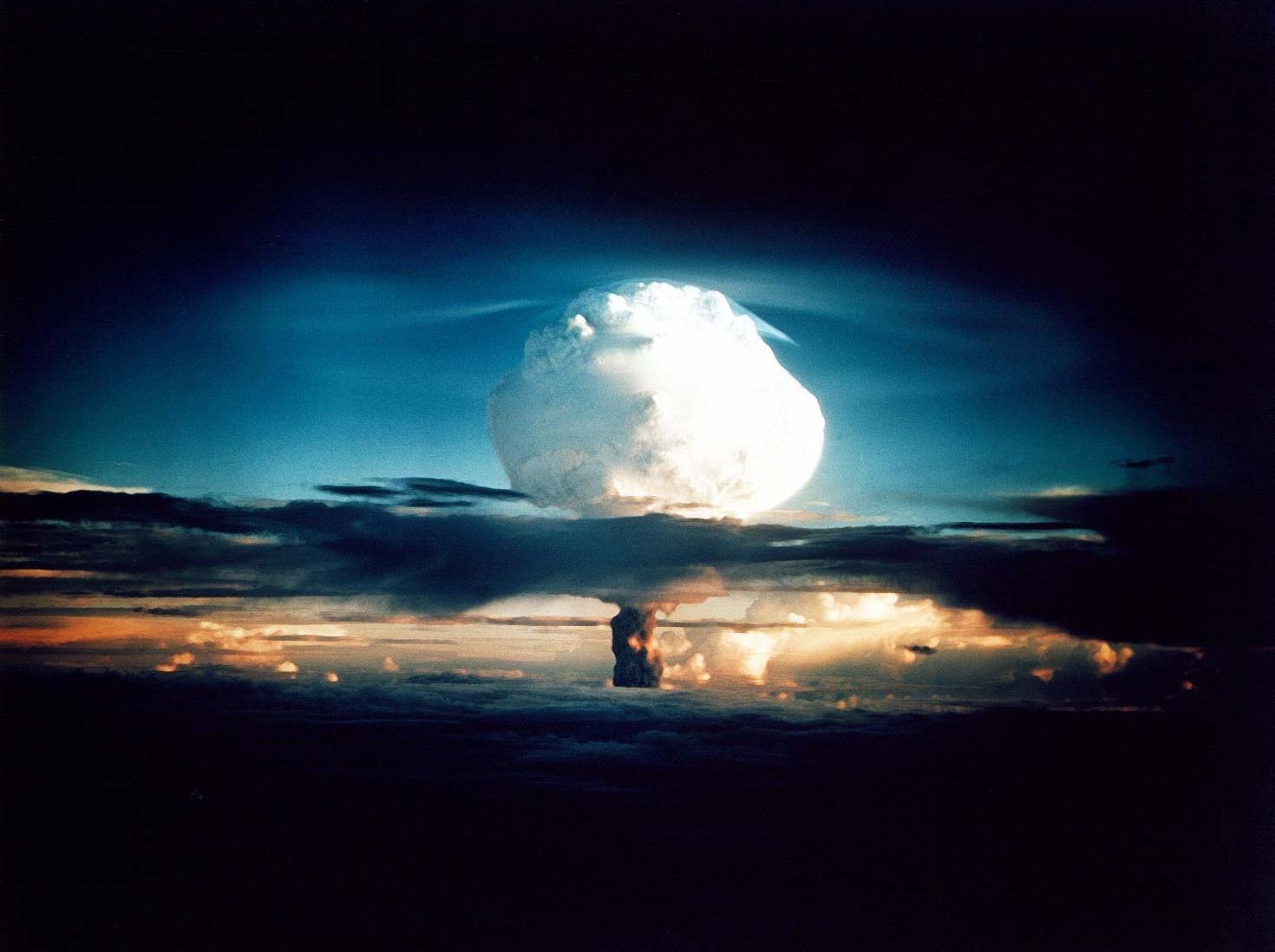
Relations between the United States and North Korea, never good, have worsened in 2017 as Kim Jong-Un’s isolated regime has sped up testing of ballistic missiles and threatened the U.S. with nuclear annihilation. For Washington, options are limited. A first strike against the hostile regime could spiral out of control, military analysts have warned. Yet at times, confrontation has seemed imminent.
President Harry Truman was the only world leader ever to use a nuclear weapon in war, when he ordered bombs dropped on Hiroshima and Nagasaki in August 1945. Japan quickly surrendered.
Since then, political scientists have pondered three theories on public feelings about using nuclear weapons: 1) “The nuclear taboo,” that nukes are so horribly destructive that they are morally wrong; 2) “The noncombatant immunity norm,” that nukes are too indiscriminate, that they kill too many civilians; and 3) sometimes known as “winning the war and saving U.S. troops,” that nuclear weapons are acceptable because they will help America win the war and reduce American troop losses. It is roughly this third theory that is ascribed to Truman’s decision in 1945.
Testing these theories is relevant for policymakers as they consider the possibility of nuclear war on the Korean Peninsula.
An academic study worth reading: “Revisiting Hiroshima in Iran: What Americans Really Think About Using Nuclear Weapons and Killing Noncombatants,” in International Security, 2017.
Study summary: Alongside North Korea’s, Iran’s nuclear program has been the focus of concern in Washington for many years. And Iran, like North Korea, has been demonized for decades.
Scott Sagan of Stanford University and Benjamin Valentino of Dartmouth College designed a hypothetical scenario in which Iran – responding to new Western sanctions – starts a war by attacking a U.S. ship and killing thousands of American service members. The scenario, of course, is reminiscent of the Japanese attack on Pearl Harbor in 1941, which brought the U.S. into World War II. What follows, in this hypothetical, is a protracted conflict that has claimed thousands of casualties on both sides.
To win this war, Tehran must be captured. America could invade with ground troops or launch a devastating attack that would kill thousands of civilians.
The scholars present three scenarios to a representative set of 780 adult Americans as an alternative to a continued ground war that would kill 20,000 American soldiers: 1) Drop a nuclear bomb that would kill 100,000 Iranian civilians in Mashhad, Iran’s second city? 2) Drop a nuke that would kill 2 million Iranian civilians? Or 3) drop conventional bombs that would kill 100,000 Iranian civilians?
The respondents were asked questions to test their approval for each of these scenarios and their preference.
Key takeaways:
- A majority of Americans approved the bombing in all three scenarios.
- In two scenarios, the respondents preferred the air strike to the risk of a ground war: The nuclear strike that kills 100,000 Iranian civilians and the conventional air strike that kills 100,000 civilians.
- A small majority of respondents (52.3 percent) preferred the ground war (and loss of 20,000 U.S. troops) to the death of 2 million Iranian civilians in a nuclear strike.
- Among those who oppose both types of airstrikes, the majority judge them unethical. There is not a statistically significant difference in moral judgement of nuclear strikes or conventicle air strikes when 100,000 civilians are killed: “This suggests that anti-nuclear norms add little to the aversion to killing civilians.”
- Those who support the airstrikes (and thus the killing of noncombatant civilians) include:
- 69.5 percent of Republicans and 48.4 percent of Democrats;
- 51.6 percent of people under age 60 and 70.5 percent of people age 60 and above;
- 31.5 percent of Americans who oppose the death penalty and 67.3 percent of those who approve of the death penalty.
- They found no statistically significant difference by race (white or non-white), education or gender.
- In an open-ended question, the majority of those who supported the bombing scenarios cited “saving American lives” or “ending the war quickly” as their reason. Surprising the researchers, a number also suggested that Iranian civilians, because their country started the conflict, “were somehow culpable or were less than human.”
- Given the option of a diplomatic solution that would not prosecute Iran’s supreme leader, Ayatollah Ali Khamenei, but would leave him without political power: A roughly equal proportion chose that scenario as chose the nuclear air strike that kills 100,000 civilians.
Helpful resources:
For public opinion inside Iran, see our February 2017 roundup.
A 2015 Pew Research Center poll found that 76 percent of Americans held unfavorable views of Iran. In spring 2017, Pew found 78 percent of Americans held unfavorable views of North Korea and reported widespread concern in Asia about the North’s nuclear program.
This 2003 study in International Security looks at gender differences in public attitudes toward the American military’s use of force. This 2015 study in the Journal of Conflict Resolution follows up with more recent literature and data.
